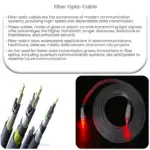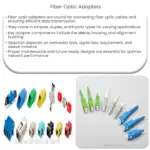Explore the reflection loss equation, its significance in various fields, factors influencing it, and an example calculation.
Understanding the Reflection Loss Equation
The reflection loss equation is an essential tool for engineers and scientists working in various fields, including acoustics, optics, and radiofrequency engineering. This equation quantifies the amount of energy reflected when a wave encounters a boundary or interface between two different media. It is particularly important in designing materials and systems that minimize energy loss due to reflection, such as acoustic panels, fiber-optic cables, or antenna systems.
Basics of the Reflection Loss Equation
At the core of the reflection loss equation is the concept of the reflection coefficient. The reflection coefficient (usually denoted as Γ) is a complex number that represents the ratio of the reflected wave amplitude to the incident wave amplitude. It is a function of the impedance of the two media, which is a measure of the resistance a medium offers to the propagation of a wave.
In general, the reflection loss (RL) can be calculated using the following equation:
RL = -20 * log10(|Γ|)
Here, RL is the reflection loss in decibels (dB), and |Γ| is the magnitude of the reflection coefficient. The negative sign in the equation indicates that the reflection loss is a negative quantity, which means that the reflected energy is always less than the incident energy. The logarithmic nature of the equation ensures that reflection loss values are represented on a relative scale, making it easier to compare and analyze different materials and interfaces.
Factors Influencing Reflection Loss
-
Impedance mismatch: A significant factor affecting the reflection loss is the impedance mismatch between the two media. When the impedance of the two media is very different, the reflection coefficient becomes large, resulting in a high reflection loss. Conversely, if the impedance of the two media is closely matched, the reflection coefficient will be small, leading to a low reflection loss.
-
Incident angle: The angle at which the wave strikes the interface also influences the reflection loss. As the incident angle increases, the reflection loss may change due to the change in the reflection coefficient. This is particularly relevant in applications where the waves are not incident at normal angles, such as in oblique-incidence sound-absorbing materials or slanted antenna arrays.
-
Frequency: Reflection loss can also be frequency-dependent, with the reflection coefficient changing as a function of frequency. This means that materials or systems designed to minimize reflection loss at a specific frequency may not perform as well at other frequencies.
In conclusion, understanding and applying the reflection loss equation is crucial for the design and optimization of materials and systems that aim to minimize energy loss due to reflection. By taking into account factors such as impedance mismatch, incident angle, and frequency, engineers and scientists can develop solutions that effectively reduce reflection loss and improve overall system performance.
Example of Reflection Loss Calculation
Let’s consider a scenario where an electromagnetic wave is propagating from air to glass. In this case, we will calculate the reflection loss at the boundary between the two media. We will assume the wave is incident at normal angles, and we will use the reflection coefficient formula for the electric field.
-
First, we need to determine the impedance of air (Z1) and glass (Z2). The impedance of a medium is given by the formula Z = μ/ε, where μ is the magnetic permeability and ε is the electric permittivity. For air, the impedance is approximately 377 Ω, and for glass (assuming a relative permittivity of 4.5), it is approximately 80 Ω.
-
Next, we will calculate the reflection coefficient (Γ) using the following formula:
Γ = (Z2 – Z1) / (Z2 + Z1)
Γ = (80 – 377) / (80 + 377)
Γ ≈ -0.65
-
Now that we have the reflection coefficient, we can compute the reflection loss (RL) using the reflection loss equation:
RL = -20 * log10(|Γ|)
RL = -20 * log10(0.65)
RL ≈ 3.72 dB
In this example, the reflection loss at the air-glass interface is approximately 3.72 dB. This means that about 3.72 dB of the incident wave’s energy is lost due to reflection when it encounters the boundary between air and glass. By understanding and applying the reflection loss equation, engineers and scientists can analyze and optimize systems to minimize energy loss due to reflection, ultimately improving their overall performance.




